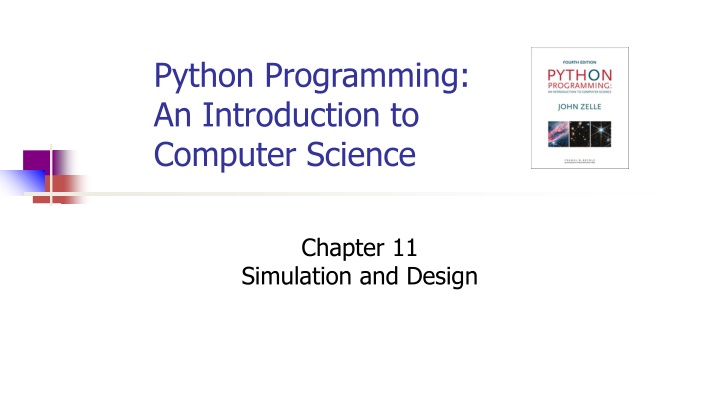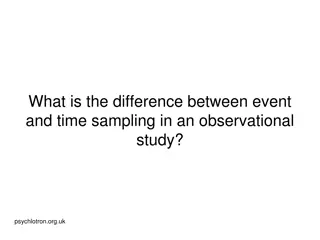Introduction to Positive Psychology
Positive Psychology in Autumn 2015 explores the scientific study of what goes right in life, focusing on strengths, building the best, and leading a fulfilling life. Key topics covered include mindset, resilience, and self-control, among others. Embracing scientific rigor, it aims to nurture high talent and well-being. Criticisms from a humanist perspective are also discussed, highlighting the marginalized stance of humanistic psychology within academia.
Download Presentation

Please find below an Image/Link to download the presentation.
The content on the website is provided AS IS for your information and personal use only. It may not be sold, licensed, or shared on other websites without obtaining consent from the author.If you encounter any issues during the download, it is possible that the publisher has removed the file from their server.
You are allowed to download the files provided on this website for personal or commercial use, subject to the condition that they are used lawfully. All files are the property of their respective owners.
The content on the website is provided AS IS for your information and personal use only. It may not be sold, licensed, or shared on other websites without obtaining consent from the author.
E N D
Presentation Transcript
Python Programming: An Introduction to Computer Science Chapter 11 Simulation and Design
Objectives To understand the potential applications of simulation as a way to solve real-world problems. To understand pseudorandom numbers and their application in Monte Carlo simulations. To understand and be able to apply top-down and spiral design techniques in writing complex programs. To understand unit-testing and be able to apply this technique in the implementation and debugging of complex programming.
Simulating Racquetball Simulation can solve real-world problems by modeling real-world processes to provide otherwise unobtainable information. Computer simulation is used to predict the weather, design aircraft, create special effects for movies, etc.
A Simulation Problem Denny Dibblebit often plays racquetball with players who are slightly better than he is. Denny usually loses his matches! Shouldn t players who are a little better win a little more often? Susan suggests that they write a simulation to see if slight differences in ability can cause such large differences in scores.
Analysis and Specification Racquetball is played between two players using a racquet to hit a ball in a four-walled court. One player starts the game by putting the ball in motion serving. Players try to alternate hitting the ball to keep it in play, referred to as a rally. The rally ends when one player fails to hit a legal shot.
Analysis and Specification The player who misses the shot loses the rally. If the loser is the player who served, service passes to the other player. If the server wins the rally, a point is awarded. Players can only score points during their own service. The first player to reach 15 points wins the game.
Analysis and Specification In our simulation, the ability level of the players will be represented by the probability that the player wins the rally when he or she serves. Example: Players with a 0.60 probability win a point on 60% of their serves. The program will prompt the user to enter the service probability for both players and then simulate multiple games of racquetball. The program will then print a summary of the results.
Analysis and Specification Input: The program prompts for and gets the service probabilities of players A and B. The program then prompts for and gets the number of games to be simulated.
Analysis and Specification Output: The program will provide a series of initial prompts such as the following: What is the probability player A wins a serve? What is the probability that player B wins a serve? How many games to simulate? The program then prints out a nicely formatted report showing the number of games simulated and the number of wins and the winning percentage for each player. Games simulated: 500 Wins for A: 268 (53.6%) Wins for B: 232 (46.4%)
Analysis and Specification Notes: All inputs are assumed to be legal numeric values, no error or validity checking is required. In each simulated game, player A serves first.
Pseudo-Random Numbers When we say that player A wins 50% of the time, that doesn t mean they win every other game. Rather, it s more like a coin toss. Overall, half the time the coin will come up heads, the other half the time it will come up tails, but one coin toss does not effect the next (it s possible to get 5 heads in a row).
Pseudo-Random Numbers Many simulations require events to occur with a certain likelihood. These sorts of simulations are called Monte Carlo algorithms because the results depend on chance probabilities. Do you remember the chaos program from chapter 1? The apparent randomness of the result came from repeatedly applying a function to generate a sequence of numbers.
Pseudo-Random Numbers A similar approach is used to generate random (technically pseudorandom) numbers. A pseudorandom number generator works by starting with a seed value. This value is given to a function to produce a random number. The next time a random number is required, the current value is fed back into the function to produce a new number.
Pseudo-Random Numbers This sequence of numbers appears to be random, but if you start the process over again with the same seed number, you ll get the same sequence of random numbers. Python provides a library module that contains a number of functions for working with pseudorandom numbers.
Pseudo-Random Numbers These functions derive an initial seed value from the computer s date and time when the module is loaded, so each time a program is run a different sequence of random numbers is produced. The two functions of greatest interest are randrange and random.
Pseudo-Random Numbers The randrange function is used to select a pseudorandom int from a given range. The syntax is similar to that of the range command. randrange(1,6) returns some number from [1,2,3,4,5] and randrange(5,105,5) returns a multiple of 5 between 5 and 100, inclusive. Ranges go up to, but don t include, the stopping value.
Pseudo-Random Numbers Each call to randrange generates a new pseudorandom int. >>> from random import randrange >>> randrange(1,6) 5 >>> randrange(1,6) 3 >>> randrange(1,6) 2 >>> randrange(1,6) 5 >>> randrange(1,6) 5 >>> randrange(1,6) 5 >>> randrange(1,6) 4
Pseudo-Random Numbers The value 5 comes up over half the time, demonstrating the probabilistic nature of random numbers. Over time, this function will produce a uniform distribution, which means that all values will appear an approximately equal number of times.
Pseudo-Random Numbers The random function is used to generate pseudorandom floating point values. It takes no parameters and returns values uniformly distributed between 0 and 1 (including 0 but excluding 1).
Pseudo-Random Numbers >>> from random import random >>> random() 0.79432800912898816 >>> random() 0.00049858619405451776 >>> random() 0.1341231400816878 >>> random() 0.98724554535361653 >>> random() 0.21429424175032197 >>> random() 0.23903583712127141 >>> random() 0.72918328843408919
Pseudo-Random Numbers The racquetball simulation makes use of the random function to determine if a player has won a serve. Suppose a player s service probability is 70%, or 0.70. if <player wins serve>: score = score + 1 We need to insert a probabilistic function that will succeed 70% of the time.
Pseudo-Random Numbers Suppose we generate a random number between 0 and 1. Exactly 70% of the interval 0..1 is to the left of 0.7. So 70% of the time the random number will be < 0.7, and it will be 0.7 the other 30% of the time. (The = goes on the upper end since the random number generator can produce a 0 but not a 1.)
Pseudo-Random Numbers If prob represents the probability of winning the server, the condition random() < prob will succeed with the correct probability. if random() < prob: score = score + 1
Top-Down Design In top-down design, a complex problem is expressed as a solution in terms of smaller, simpler problems. These smaller problems are then solved by expressing them in terms of smaller, simpler problems. This continues until the problems are trivial to solve. The little pieces are then put back together as a solution to the original problem!
Top-Level Design Typically a program uses the input, process, output pattern. The algorithm for the racquetball simulation: Print an introduction Get the inputs: probA, probB, n Simulate n games of racquetball using probA and probB Print a report on the wins for playerA and playerB
Top-Level Design Is this design too high level? Whatever we don t know how to do, we ll ignore for now. Assume that all the components needed to implement the algorithm have been written already, and that your task is to finish this top-level algorithm using those components.
Top-Level Design First we print an introduction. This is easy, and we don t want to bother with it. def main(): printIntro() We assume that there s a printIntro function that prints the instructions!
Top-Level Design The next step is to get the inputs. We know how to do that! Let s assume there s already a component that can do that called getInputs. getInputs gets the values for probA, probB, and n. def main(): printIntro() probA, probB, n = getInputs()
Top-Level Design Now we need to simulate n games of racquetball using the values of probA and probB. How would we do that? We can put off writing this code by putting it into a function, simNGames, and add a call to this function in main.
Top-Level Design If you were going to simulate the game by hand, what inputs would you need? probA probB n What values would you need to get back? The number of games won by player A The number of games won by player B These must be the outputs from the simNGames function.
Top-Level Design We now know that the main program must look like this: def main(): printIntro() probA, probB, n = getInputs() winsA, winsB = simNGames(n, probA, probB) What information would you need to be able to produce the output from the program? You d need to know how many wins there were for each player these will be the inputs to the next function.
Top-Level Design The complete main program: def main(): printIntro() probA, probB, n = getInputs() winsA, winsB = simNGames(n, probA, probB) printSummary(winsA, winsB)
Separation of Concerns The original problem has now been decomposed into four independent tasks: printIntro getInputs simNGames printSummary The name, parameters, and expected return values of these functions have been specified. This information is known as the interface or signature of the function.
Separation of Concerns Having this information (the signatures), allows us to work on each of these pieces independently. For example, as far as main is concerned, how simNGames works is not a concern as long as passing the number of games and player probabilities to simNGames causes it to return the correct number of wins for each player.
Separation of Concerns In a structure chart (or module hierarchy chart), each component in the design is a rectangle. A line connecting two rectangles indicates that the one above uses the one below. The arrows and annotations show the interfaces between the components.
Separation of Concerns At each level of design, the interface tells us which details of the lower level are important. The general process of determining the important characteristics of something and ignoring other details is called abstraction. The top-down design process is a systematic method for discovering useful abstractions.
Second-Level Design The next step is to repeat the process for each of the modules defined in the previous step! The printIntro function should print an introduction to the program. The code for this is straightforward.
Second-Level Design def printIntro(): # Prints an introduction to the program print("This program simulates a game of racquetball between two") print('players called "A" and "B". The abilities of each player is') print("indicated by a probability (a number between 0 and 1) that") print("the player wins the point when serving. Player A always") print("has the first serve.\n") In the second line, since we wanted double quotes around A and B, the string is enclosed in apostrophes. Since there are no new functions, there are no changes to the structure chart.
Second-Level Design In getInputs, we prompt for and get three values, which are returned to the main program. def getInputs(): # RETURNS probA, probB, number of games to simulate a = float(input("What is the prob. player A wins a serve? ")) b = float(input("What is the prob. player B wins a serve? ")) n = int(input("How many games to simulate? ")) return a, b, n
Designing simNGames This function simulates n games and keeps track of how many wins there are for each player. Simulate n games sounds like a counted loop, and tracking wins sounds like a good job for accumulator variables.
Designing simNGames initialize winsA and winsB to 0 loop n times simulate a game if playerA wins add one to winsA else add one to winsB
Designing simNGames We already have the function signature: def simNGames(n, probA, probB): # Simulates n games and returns winsA and winsB With this information, it s easy to get started! def simNGames(n, probA, probB): # Simulates n games and returns winsA and winsB winsA = 0 winsB = 0 for i in range(n):
Designing simNGames The next thing we need to do is simulate a game of racquetball. We re not sure how to do that, so let s put it off until later! Let s assume there s a function called simOneGame that can do it. The inputs to simOneGame are easy the probabilities for each player. But what is the output?
Designing simNGames We need to know who won the game. How can we get this information? The easiest way is to pass back the final score. The player with the higher score wins and gets their accumulator incremented by one.
Designing simNGames def simNGames(n, probA, probB): # Simulates n games and returns winsA and winsB winsA = 0 winsB = 0 for i in range(n): scoreA, scoreB = simOneGame(probA, probB) if scoreA > scoreB: winsA = winsA + 1 else: winsB = winsB + 1 return winsA, winsB
Third-Level Design The next function we need to write is simOneGame, where the logic of the racquetball rules lies. Players keep doing rallies until the game is over, which implies the use of an indefinite loop, since we don t know ahead of time how many rallies there will be before the game is over.
Third-Level Design We also need to keep track of the score and who s serving. The scores will be two accumulators, so how do we keep track of who s serving? One approach is to use a string value that alternates between A or B .
Third-Level Design Initialize scores to 0 Set serving to A Loop while game is not over: Simulate one serve of whichever player is serving Update the status of the game Return scores def simOneGame(probA, probB): scoreA = 0 scoreB = 0 serving = "A" while <condition>: What will the condition be?? Let s take the two scores and pass them to another function that returns True if the game is over, False if not.























